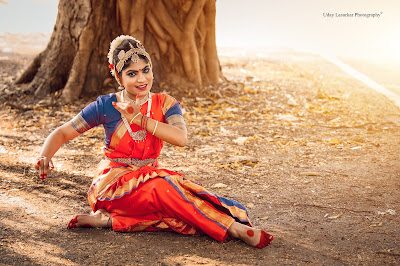History Of Bharatnatyam
History Of Bharatnatyam
1.Devadasis, anti-dance movement, colonial ban and the decline
Bharatnatyam Dance style Have a huge History .The theoretical foundations of Bharatanatyam are found in Natya shastra, the ancient Hindu text of performance arts.
Natya Shastra is attributed to the ancient scholar Bharat Muni, and its first complete compilation is dated to between 200 BCE and 200 CE, but estimates vary between 500 BCE and 500 CE. The most studied version of the Natya Shastra text consists of about 6000 verses structured into 36 chapters. The text, states Natalia Lidova, describes the theory of Tāṇḍava dance the theory of rasa, of bhāva, expression, gestures, acting techniques, basic steps, standing postures—all of which are part of Indian classical dances.Dance and performance arts, states this ancient text, are a form of expression of spiritual ideas, virtues and the essence of scriptures.
More direct historical references to Bharatnatyam is found in the Tamil epics Silappatikaram and Manimegalai The ancient text Silappatikaram, includes a story of a dancing girl named Madhavi; it describes the dance training regimen called Arangatrau Kathai of Madhavi in verses 113 through 159.The carvings in Kanchipuram's Shiva temple that have been dated to 6th to 9th century CE suggest Bharatanatyam was a well developed performance art by about the mid 1st millennium CE.
A famous example of illustrative sculpture is in the southern gateway of the Chidambaram temple (12th century) dedicated to the Hindu Lord Nataraja, where 108 poses of the Bharatnatyam, that are also described as karanas in the Natya Shastra, are carved in stone.
Many of the ancient Shiva sculptures in Hindu temples are the same as the Bharatanatyam dance poses. For example, the Cave 1 of Badami Cave Temple , dated to 7th-century,portrays the Tandav -dancing Shiva as Lord Nataraja . The image, 5 feet (1.5 m) tall, has 18 arms in a form that expresses the dance positions arranged in a geometric pattern. The arms of Shiva express Mudras (symbolic hand gestures), that are found in Bharatanatyam.
Devadasis, anti-dance movement, colonial ban and the decline-
Some colonial Indologists and modern authors have argued that Bharatanatyam is a descendant of an ancient Devadasi (literally, servant girls of Deva temples) culture, suggesting a historical origin back to between 300 BCE and 300 CE.Modern scholarship has questioned this theory for lack of any direct textual or archeological evidence. Historic sculpture and texts do describe and project dancing girls, as well as temple quarters dedicated to women, but they do not state them to be courtesans and prostitutes as alleged by early colonial Indologists.According to Davesh Soneji, a critical examination of evidence suggests that courtesan dancing is a phenomenon of the modern era, beginning in the late 16th or the 17th century of the Nayaka Period of Tamil Nadu. According to James Lochtefeld, Bharatanatyam remained exclusive to Hindu temples through the 19th century, only in the 20th century appearing on stage outside the temples. Further, the maratha rulers of Tanjore patronized and contributed towards Bharatanatyam.
With the arrival of the East India Company in the 18th century, and British colonial rule in the 19th, many classical Indian dance forms were ridiculed and discouraged, and these performance arts declined.Christian missionaries and British officials presented " Nautch girls " of north India (Kathak) and "devadasis" of south India (Bharatanatyam) as evidence of "harlots, debased erotic culture, slavery to idols and priests" tradition, and Christian missionaries demanded that this must be stopped, launching the "anti-dance movement" in 1892.The anti-dance camp accused the dance form as a front for prostitution, while revivalists questioned the constructed colonial histories.
In 1910, the Madras Presidency of the British Empire altogether banned temple dancing, and with it the Bharatanatyam tradition within Hindu temples.
Post-colonial revival:-
The 1910 ban triggered powerful protests against the stereotyping and dehumanization of temple dancers. The Tamil people were concerned that a historic and rich dance tradition was being victimized under the excuse of social reform. The classical art revivalists such as E.krishna Iyer, a lawyer and someone who had learnt the Bharatanatyam dance, questioned the cultural discrimination and the assumed connection, asking why prostitution needs years of learning and training for performance arts such as the Bharatanatyam, and how can killing performance arts end any evils in a society? Iyer was arrested and sentenced to prison on charges of nationalism, who while serving out his prison term persuaded his fellow political prisoners to support Bharatanatyam.
While the British colonial government enforced laws to suppress Bharatanatyam and all Hindu temple dances, some from the West such as the American dancer Esther Sherman moved to India in 1930, learnt Indian classical dances, changed her name to Ragini Devi, and joined the movement to save and revive Bharatanatyam and other ancient dance arts.
The Indian independence movement in early 20th century, already in progress, became a period of cultural ferment and initiated an effort by its people to reclaim their culture and rediscover history. In this period of cultural and political turmoil, instead of Bharatnatyam becoming extinct, it expanded out of Hindu temples and was revived as a mainstream dance by Bharatnatyam artists such as Rukmini devi Arundale , Balsaraswati and yamini krushnamurti They championed and performed the Pandanallur (Kalakshetra) and Thanjavur styles of Bharatanatyam, respectively.
In late 20th century, Tamil Hindu migrants reintroduced the Bharatanatyam traditions of temple dancing in British Tamil temples


No comments:
Post a Comment